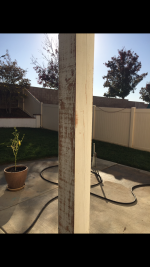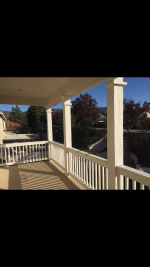Hey guys,
Need advice from the group. Have quite a bit of sanding ahead of me and before I spend money on abrasives and possibly a new sander, here's the situation.
Wanting to strip, though not completely (see attached) painted wood (not sure species) posts which have not been touched since the house was built in 2008. The look I’m going for is weathered/whitewashed.
I have 2 Festool sanders (RAS 115E and ETS 150/3 EQ) and basically no abrasives other than a bunch of Brilliant P220. Aside from abrasive recommendations, wondered if a smaller specialty sander would be in the cards. I am not removing railings so there is a bit a tight spots and some linear edges where the posts meet the stucco exterior.
In the pic of the sanded post, I used the following tools/abrasives due to availability:
RAS w/ Rubin 2 (P40)
RAS w/ Rubin 2 (P80)
ETS w/ Granat (P80)
ETS w/ Brilliant 2 (P220)
Thanks in advance for any suggestions and all the best to those celebrating Thanksgiving with family this year!!
Warm regards,
John-Jason
Need advice from the group. Have quite a bit of sanding ahead of me and before I spend money on abrasives and possibly a new sander, here's the situation.
Wanting to strip, though not completely (see attached) painted wood (not sure species) posts which have not been touched since the house was built in 2008. The look I’m going for is weathered/whitewashed.
I have 2 Festool sanders (RAS 115E and ETS 150/3 EQ) and basically no abrasives other than a bunch of Brilliant P220. Aside from abrasive recommendations, wondered if a smaller specialty sander would be in the cards. I am not removing railings so there is a bit a tight spots and some linear edges where the posts meet the stucco exterior.
In the pic of the sanded post, I used the following tools/abrasives due to availability:
RAS w/ Rubin 2 (P40)
RAS w/ Rubin 2 (P80)
ETS w/ Granat (P80)
ETS w/ Brilliant 2 (P220)
Thanks in advance for any suggestions and all the best to those celebrating Thanksgiving with family this year!!
Warm regards,
John-Jason



